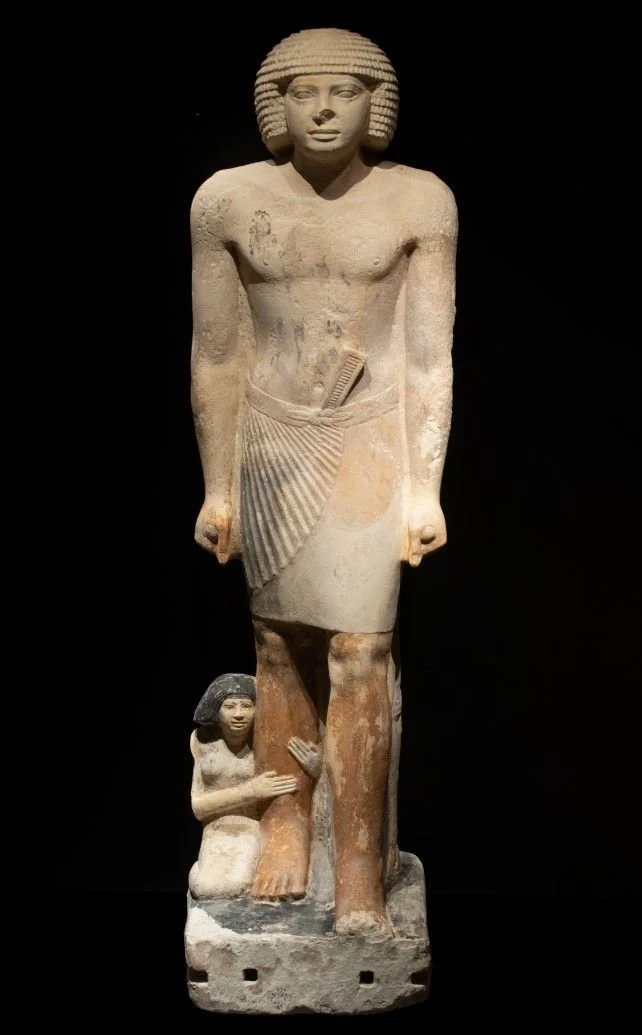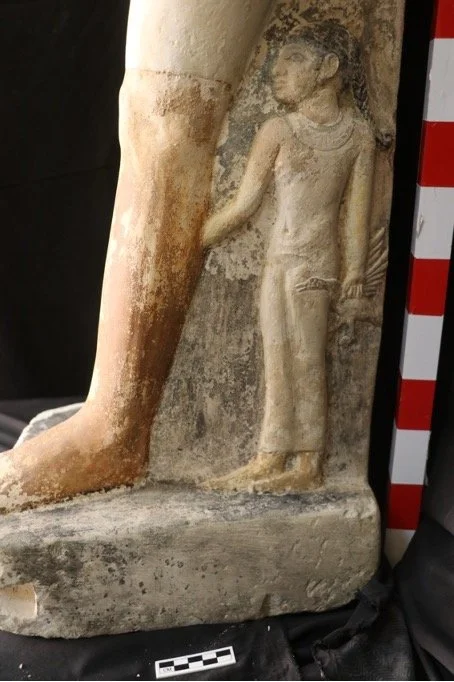Press Coverage of a Unique Family Statue from the site of Gisr El-Mudir at Saqqara
The press coverage of the Gisr El-Mudir family statue highlights its profound implications for the study of ancient Egyptian art.
The Gisr El-Mudir family statue is a unique example from the Old Kingdom, dating to the 5th Dynasty. Unlike any other extant family statuary, all members, except the daughter, are rendered in full three-dimensionality. The daughter, meanwhile, is articulated in high relief—a sculptural technique rarely encountered in Old Kingdom statuary.
This hybridization of three-dimensional sculpture and high relief within a single monument not only reflects a unique artistic experiment but also fills a significant gap in the chronology of Egyptian sculptural techniques. Whereas high relief is typically attributed to the Ptolemaic period (as seen, for example, in the relief of Thutmose III from Karnak Temple), the Gisr El-Mudir statue demonstrates a mastery of high relief as early as the 5th Dynasty, approximately 4,300 years ago.
Discovered beneath a layer of sand, the statue was situated adjacent to a false door carrying the name “Messi.” In ancient Egyptian funerary practice, such false doors served as symbolic thresholds for the deceased’s soul to traverse between the worlds of the living and the dead. The presence of this feature, in combination with the family grouping of the statue, strongly indicates an underlying ideology centered on the perpetuation of familial bonds in the afterlife, paralleling their relationships in life. The absence of inscriptions within the tomb further emphasizes the reliance on visual, rather than textual, communication of status and ritual.
Of particular note is the daughter’s depiction with a goose—an iconographic motif that aligns with domestic scenes frequently illustrated on tomb walls of the period. This detail, rather than being a mere embellishment, functions as an essential element in affirming both the daily life of the family and their anticipated reunion and sustenance in the afterlife.
The significance of this statue is manifold. It compels a reassessment of earlier assumptions about the origins and development of high relief sculpture in Egypt. Moreover, the integration of two distinct sculptural traditions in one artifact attests to a dynamic spirit of experimentation among Old Kingdom artisans.
Ongoing research will further elucidate the context and broader significance of this discovery, reshaping conventional narratives of Old Kingdom material culture.







